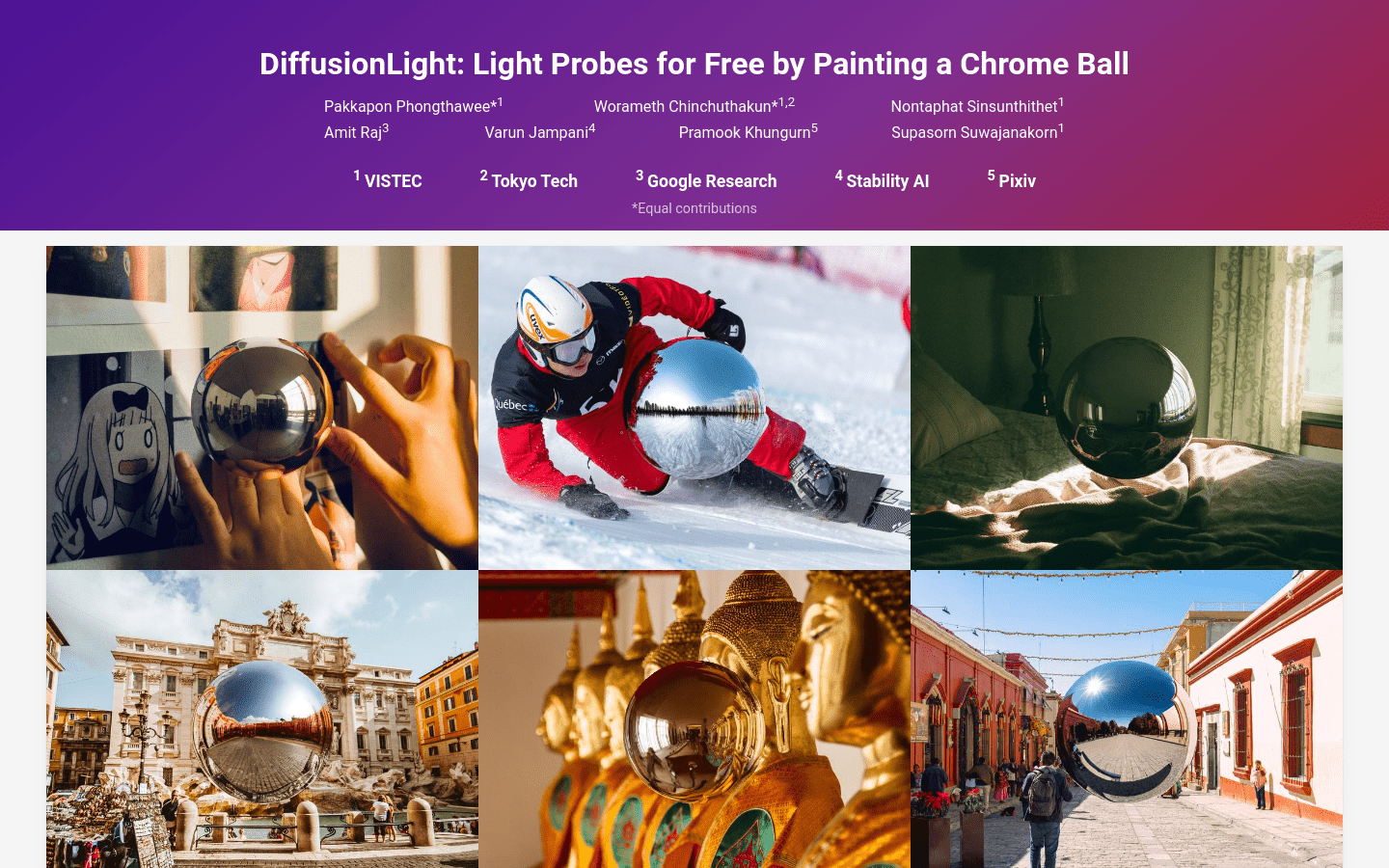

Diffusionlight
Overview :
DiffusionLight is a technique that utilizes a diffusion model to estimate lighting effects from a single input image. It employs a pre-trained Stable Diffusion XL model to draw a reflective sphere, then expands it to create a panoramic lighting map. This technology addresses the issue that existing neural network-based methods rely on a limited HDR panorama dataset, resulting in poor performance in realistic complex scenes. The key innovation lies in the discovery of the relationship between the diffusion noise map and the quality of the reflective sphere generation, iteratively generating high-quality reflective spheres; and through LoRA training, enabling LDR models to output HDR format. The technology can produce realistic lighting estimations, especially suitable for outdoor scenes.
Target Users :
["Indoor and outdoor environment modeling and rendering","Image editing and composite effect adjustment after synthesis","Portrait photo beautification","Inserting 3D objects into real images"]
Use Cases
Input a photograph of a minimalist indoor style, use DiffusionLight to predict the reflective sphere, and then create a lighting map based on the sphere to achieve realistic rendering of 3D models in the indoor scene
Input a close-up photograph of a cup, use DiffusionLight to predict the lighting effect, and then perform tone adjustments to make the cup more transparent and playful
Input a full-body front portrait, use DiffusionLight to predict the environmental lighting, and then perform contour softening to achieve a natural and beautiful portrait photo style
Features
Draw reflective spheres using the Stable Diffusion model
Control the initial noise map to enhance consistency of generation
Suitable for indoor and outdoor, portrait and various other scenes
LoRA training for multi-exposure synthesis, outputting HDR format
More robust compared to traditional methods
Featured AI Tools
Chinese Picks

Capcut Dreamina
CapCut Dreamina is an AIGC tool under Douyin. Users can generate creative images based on text content, supporting image resizing, aspect ratio adjustment, and template type selection. It will be used for content creation in Douyin's text or short videos in the future to enrich Douyin's AI creation content library.
AI image generation
9.0M

Outfit Anyone
Outfit Anyone is an ultra-high quality virtual try-on product that allows users to try different fashion styles without physically trying on clothes. Using a two-stream conditional diffusion model, Outfit Anyone can flexibly handle clothing deformation, generating more realistic results. It boasts extensibility, allowing adjustments for poses and body shapes, making it suitable for images ranging from anime characters to real people. Outfit Anyone's performance across various scenarios highlights its practicality and readiness for real-world applications.
AI image generation
5.3M














